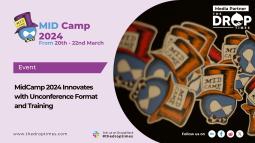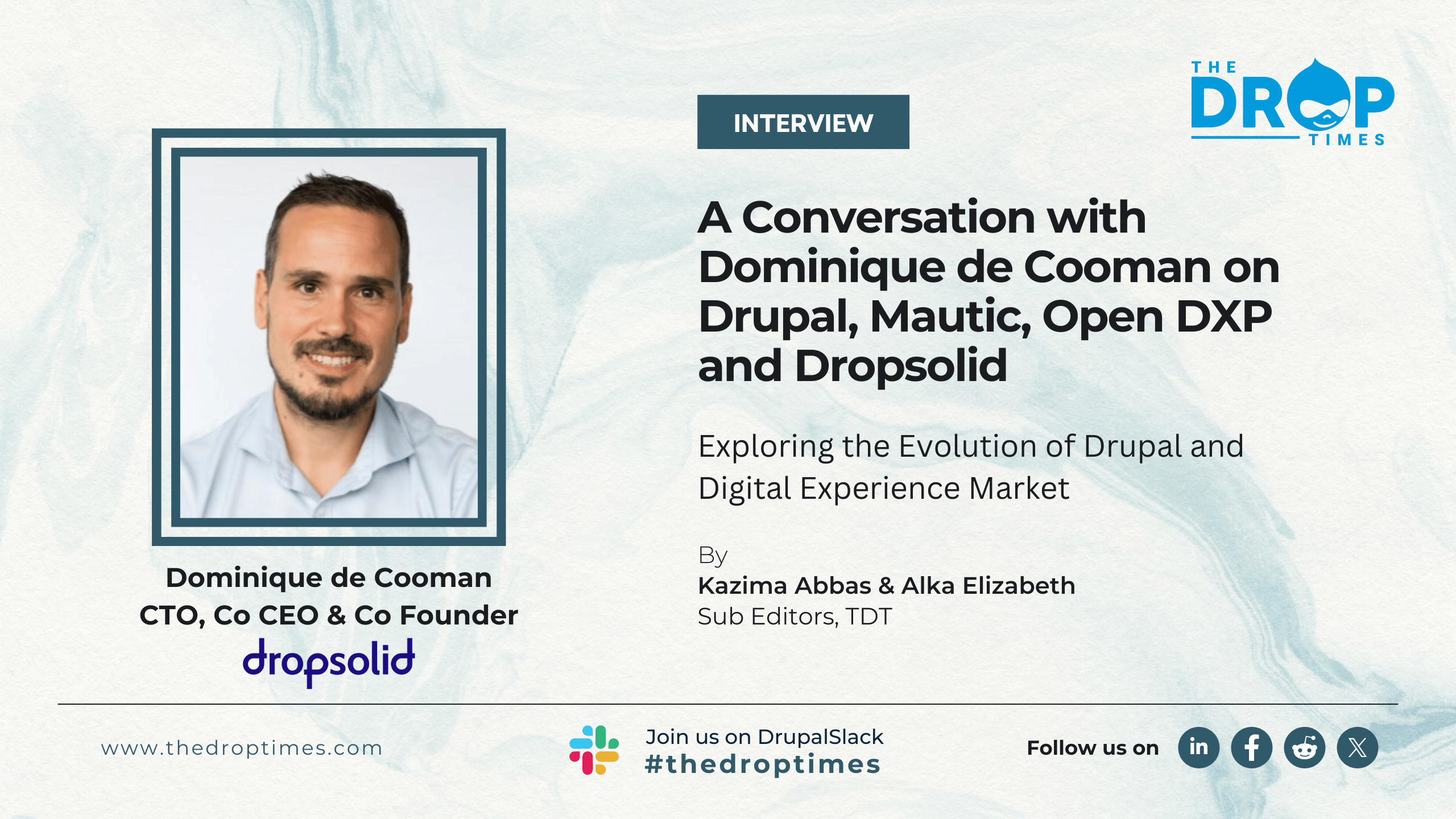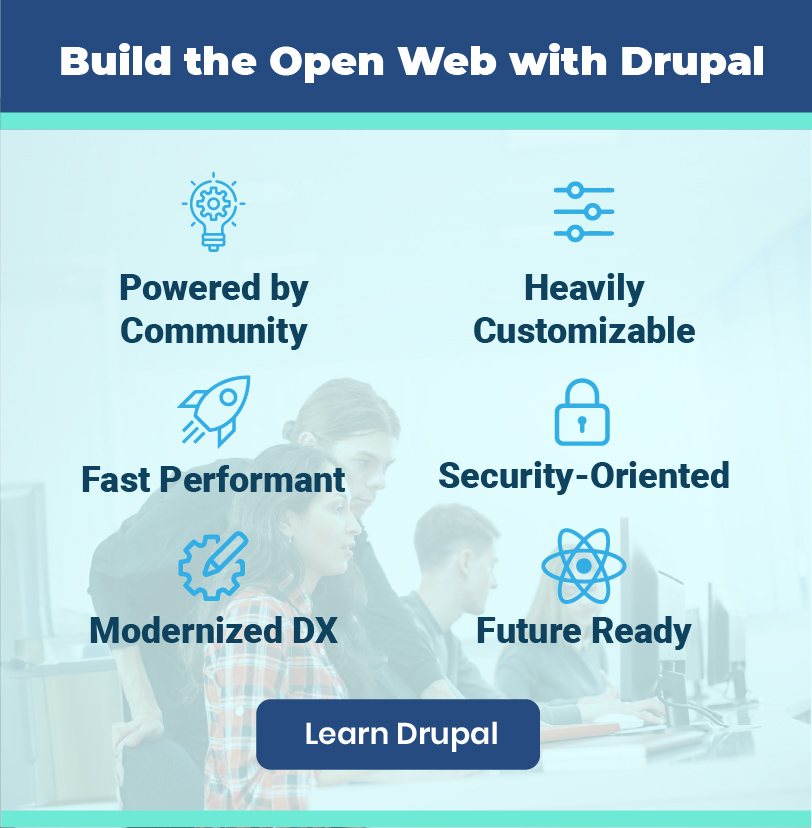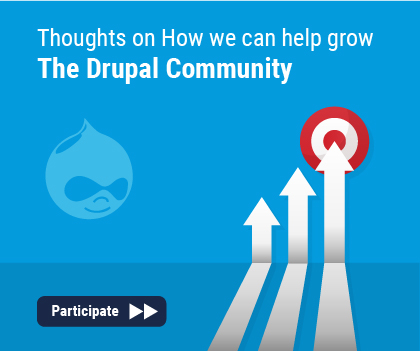Drupal's Future Excites and Warrants Consideration: Boyan Borisov
Started as a web developer in 2006, Boyan Borisov, currently holding the position of VP of Digital Solutions Europe at FFW, has come a long way. At the beginning of his career, he stumbled upon Drupal 4 and was impressed by its features. Later on, in a different institution, he again had the chance to introduce and experience Drupal 7, a journey nearing almost two decades and still going strong. If asked, "Why Drupal?" Boyan gives us a straight answer.
"Developers love it, businesses benefit from quicker projects, and it's easy for new folks to get on board. Joining FFW and experiencing the awesome Drupal Community sealed the deal for me. It started with the code, but it's the community that keeps me hooked."
In an email correspondence with Alka Elizabeth, sub-editor at The DropTimes, Boyan Borisov shares his journey of becoming a Drupal enthusiast and probes into transitioning through different roles at FFW. He also emphasizes the importance of continuous learning, adaptability, open-mindedness, and motivation from his team at FFW as key elements in his professional development.
Boyan discusses the benefits of transitioning from individual Drupal sites to a unified multi-brand ecosystem using Drupal Multisite and also addresses the challenges, focusing on the need for cultural shift and change management to ensure a successful implementation. Boyan iterates that a successful implementation requires more than a technological shift; it necessitates transforming people's work habits and thinking processes.
"Recognizing that the project is about more than just adopting new technology but is, in fact, a cultural shift allows us to implement the right change management activities effectively."
In his experience with Saint-Gobain's digital transformation program on Drupal, Boyan outlines the challenges and strategic solutions. He also discusses the evolution of Layout Builder, emphasizing its remarkable transformation and alignment with earlier predictions.
"The Layout Builder ecosystem has experienced exponential growth, expanding from 16 modules in 2019 to an impressive tally of over 100 modules by 2023. "
Boyan highlights his engagement with the Drupal community, from code contributions and mentoring to active participation in DrupalCons and DrupalCamps. Boyan also analyzes the pros and cons of Drupal's roadmap to the future.
"Analyzing Drupal's roadmap to the future, I find several aspects that both excite me and warrant consideration.
Please read on.
TDT [1]: Boyan, you have been a Drupalist since 2007. How did you get introduced to Drupal and its vibrant community? Most importantly, what made you choose, stay, and work for Drupal when there are plenty of CMSs out there?
Boyan Borisov: Back in 2006, at the start of my IT journey, I stumbled upon Drupal 4 while working at a small agency. We were trying out different technologies until Drupal showed up. It was easy for developers, saving time on projects, and it just worked well.
After leaving that agency, I tried other frameworks at different jobs. But when I got the chance, I introduced Drupal 7 to a new company. It was a hit because developers liked it, projects got done faster, and new team members could jump in smoothly. Then, I made the call to join FFW, one of the top Drupal agencies. In my first year at FFW, I attended DrupalCon Munich in 2012. That's where I saw how cool and friendly the Drupal Community is.
So, why Drupal? Developers love it, businesses benefit from quicker projects, and it's easy for new folks to get on board. Joining FFW and experiencing the awesome Drupal Community sealed the deal for me. It started with the code, but it's the community that keeps me hooked.
TDT [2]: Previously, CTO, and now VP of Digital Solutions Europe at FFW, the responsibilities and pressure have definitely gone up. Even so, how has the organization and the varied positions you have handled built you over the years?
Boyan Borisov: When I joined FFW, we were a team of around 100 people. Fast forward to today, and we've grown to over 800. Technology has skyrocketed in the past 12 years, bringing about incredible innovations like AI, Blockchain, Cloud computing, Electric vehicles, IoT, 3D printing, and more—it's mind-boggling.
This journey with FFW and witnessing the tech evolution has transformed me. Here are a few lessons I've learned along the way:
- Keep Learning: In a rapidly evolving digital landscape, staying curious and constantly learning is key.
- Adaptability: The ability to adapt to new technologies and changing roles is crucial. Flexibility keeps you relevant.
- Open-mindedness: Embracing new ideas and approaches fosters innovation. Being open-minded has been a game-changer.
- Motivation from People: The incredible team at FFW motivates me. It's the people I work with that make the journey worthwhile.
So, while the responsibilities and pressure have increased, it's been an enriching experience,, and these principles have been my guiding light.
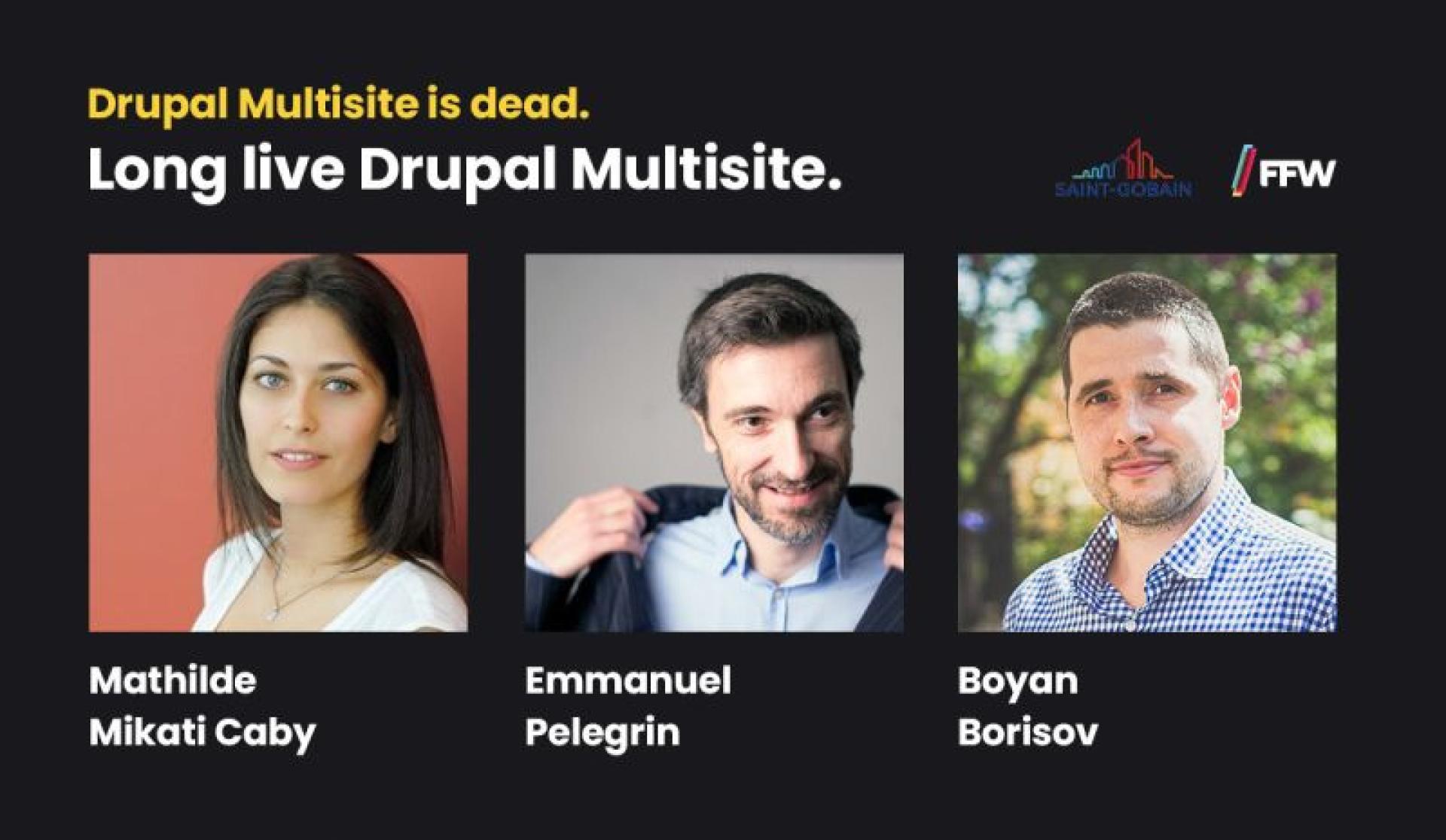
TDT [3]: In your past session at DrupalCon Lille, you discussed merging multiple platforms into a single unified multi-brand ecosystem. What are the primary benefits and potential drawbacks of transitioning from individual Drupal sites to a unified multi-brand ecosystem using Drupal Multisite? How do you approach balancing the advantages with the challenges to ensure a successful implementation?
Boyan Borisov: Merging multiple sites and brands into a single multi-brand platform offers several compelling benefits. First and foremost, there's a substantial reduction in the total cost of ownership. Standard features typically duplicated for each brand are consolidated into a unified solution, significantly streamlining development and maintenance costs.
Managing Drupal becomes more straightforward as well. Instead of juggling maintenance for numerous individual platforms, we centralize efforts into maintaining one robust Drupal platform. This not only simplifies day-to-day operations but also enhances overall system stability. One of the notable advantages is the collaborative innovation that arises when diverse teams join forces to enhance a single platform. This collaborative approach fosters efficiency and ensures that innovations benefit every brand on the unified platform.
Security and compliance also see marked improvements. Establishing best practices, security measures, and compliance standards only needs to occur once for the unified platform, making it more manageable than enforcing these practices across multiple individual brand platforms. As for potential drawbacks, the main challenge lies in ensuring that everyone in the organization understands and adapts to the global platform. This involves acknowledging a particular release cycle, roadmap, and governance principles. The key to a successful implementation is not just a technological shift but a transformation in people's work habits and thinking processes. Recognizing that the project is about more than just adopting new technology but is, in fact, a cultural shift allows us to implement the right change management activities effectively. It's about aligning technology changes with a people-centric approach, ensuring a smooth transition, and maximizing the benefits of a unified multi-brand ecosystem.
TDT [4]: Could you share some insights into your experience working with Saint-Gobain and their digital transformation program on Drupal? What were the key challenges, and how did you overcome them? How are you measuring success in such turnkey projects?
Boyan Borisov: Working with Saint-Gobain on their digital transformation journey with Drupal was indeed a transformative experience marked by significant challenges and strategic solutions.
Below, you can find the key challenges that we faced.
- Diverse UX/UI Creation: Creating unique user experiences for each business unit required intricate coordination between two agencies to craft distinct designs aligned with varying stakeholder demands.
- Legacy Platform Analysis: Analyzing and migrating from multiple legacy platforms proved complex. Some legacy features lacked clear specifications, necessitating reverse engineering efforts to ensure functionality continuity.
- PIM Integration Complexity: Integrating Product Information Management (PIM) systems posed a critical challenge due to the diversity of products and solutions across websites. This led to the implementation of three PIM systems and the management of 32 different data models.
- Stakeholder Management: Handling multiple external and internal stakeholders added complexity to project coordination, communication, and decision-making processes.
- Third-Party Integrations: Integrating various third-party systems such as PIM, CRM, and marketing automation systems, with the flexibility for plug-and-play, required meticulous planning and execution to ensure seamless functionality.
To overcome the challenges, we’ve made several strategic approaches that have led us to success.
- Recognizing Agility and Scope: Acknowledging the need for agility due to diverse dependencies and team availability, we balanced it with the importance of a clear scope. An extensive discovery phase comprising Insights and Concept stages was initiated within fixed time and budget constraints, following a Waterfall methodology. This closely collaborated with pilot business units to ensure project relevance.
- Insights and Concept Development: The Insights phase involved workshops and interviews to deeply understand Saint-Gobain's digital ecosystem. We crafted the solution architecture, wireframe prototypes, and a high-level backlog in the Concept phase. Adjustments were made based on dependencies.
- Parallel UX/UI Design: The subsequent Design phase involved two agencies working simultaneously on distinct UX/UI experiences, aligning with the goal of offering unique interfaces for each business unit.
- Agile Implementation: Transitioning to the Scrum framework for implementation offered the needed flexibility and agility.
- Pilot Launch and Migration: The project initiated with the launch of the pilot website, followed by a product management approach for migrating other websites. New features and enhancements were incorporated as necessary.
The key success factors used to measure our success were the addition to the platform, reducing the total cost of ownership without sacrificing flexibility and functionalities.
- 150+ Websites: The platform now successfully accommodates over 150 websites.
- Multi-Vendor Flexibility: A multi-vendor platform enables efficient feature reuse across various brands and websites.
- 8+ Brands: Currently, eight brands utilize the platform, with potential for further expansion.
- Time-to-Market Reduction: The project led to a substantial reduction in time to market.
- Total Cost of Ownership (TCO) Reduction: The TCO was significantly lowered, enhancing cost efficiency across the digital ecosystem.
The project's success is measured not only in the achieved outcomes but also in the transformative impact on Saint-Gobain's digital presence, reinforcing the effectiveness of a strategic and adaptive approach to digital transformation.

TDT [5]: Three years back in DrupalCon Amsterdam, you gave a talk about the Layout Builder Ecosystem reviewing the related contributed modules and the pros and cons of the possible roadmap. How do you think Layout Builder has transformed over the years? Did it align with your prediction three years back?
Boyan Borisov: Absolutely, the transformation of the Layout Builder over the past three years has been nothing short of remarkable, and it aligns perfectly with the predictions made not only by me but by the Drupal community at large.
At the time of the talk in 2019, we foresaw Layout Builder evolving into an integral component for many Drupal websites, and this foresight has undeniably proven accurate. The Layout Builder ecosystem has experienced exponential growth, expanding from 16 modules in 2019 to an impressive tally of over 100 modules by 2023.
This evolution is particularly impactful because Layout Builder has simplified the website-building process for complex platforms requiring high customization while simultaneously expediting the efforts of site builders working on smaller websites. This versatility is a testament to the adaptability of Layout Builder to diverse project scales and complexities.
The success story extends beyond developers to include everyone involved in the website ecosystem. From content editors seeking a more intuitive way to manage layouts to developers aiming for efficiency in site building, Layout Builder has emerged as a tool that caters to the needs of the entire spectrum.
In essence, the growth and adoption of Layout Builder underscore its significance as a transformative force in Drupal website development. It has not only met but also exceeded expectations, becoming an indispensable asset in the toolkit for creating dynamic and customizable digital experiences across the Drupal community.

TDT [6]: What was the audience like for the Layout Builder Vol 2 presentation in DrupalCon Lille?
Boyan Borisov: During the previous presentation, the room was abuzz with enthusiasm, drawing a full house even as the last session of the day—a clear testament to the widespread interest and demand for insights into Layout Builder and similar tools.
This level of engagement speaks volumes about the popularity and relevance of Layout Builder in the Drupal community. It reflects a genuine need for a deeper understanding of the capabilities and advancements in layout-building tools.
Moreover, the diversity of the audience during the previous presentation was striking. Attendees included content editors, site builders, project managers, quality assurance professionals, and developers—a true reflection of the tool's broad appeal and utility across various roles within the Drupal ecosystem.
In Layout Builder Vol 2, the audience could expect a continuation of this exploration, delving into new features, advancements, and practical use cases that further enhance the capabilities of Layout Builder. Whether you're a content editor aiming for more intuitive content management, a site builder seeking efficiency, or a developer looking for insights into the latest developments, this presentation aimed to deliver valuable and actionable insights for everyone in attendance.
TDT [7]: Being an expert with a system like Drupal and being an active member of its community are two different things. How did you find your place in the Drupal Community, and how do you typically engage with the community?
Boyan Borisov: My journey in the Drupal Community has evolved over the years, transitioning from an initial focus on code contribution and mentoring to a more diverse and inclusive engagement approach.
In the early stages, my connection with the community was primarily through code contributions, mentoring, and active discussions on Drupal.org. This foundational involvement allowed me to directly contribute to the Drupal project and engage with fellow community members on technical aspects and problem-solving.
As time progressed, I recognized the importance of face-to-face interactions and community events. This realization led me to participate in multiple DrupalCons and DrupalCamps across Europe. Getting to know the people behind the code, sharing experiences, and learning from one another significantly enriched my engagement with the community.
In recent years, my involvement has extended beyond personal participation to include various initiatives at FFW. We have actively sponsored, organized, and promoted Drupal and diverse Drupal events. Notable among these are DrupalCon Lille, WebSummit, and the Women in Drupal Awards. These initiatives align with FFW's commitment to fostering community growth, diversity, and inclusivity within the broader Drupal ecosystem.
TDT [8]: Could you share any exciting or upcoming projects or initiatives you're currently working on within the Drupal ecosystem or at FFW that you are pumped about?
Boyan Borisov: Absolutely, there's an array of exciting initiatives within the Drupal ecosystem and at FFW that I'm thrilled to share.
One standout initiative at FFW involves collaborating with our technology partners to enhance contrib modules that seamlessly integrate with Drupal. A prime example is the Siteimprove module for Drupal.
Our commitment to improving and maintaining these modules has resulted in a remarkable testimonial. Since FFW took on the maintenance of the Siteimprove module, its usage has surged by more than 105%, benefitting over 2,000 websites. This success is a testament to the positive impact that collaborative efforts can have on the Drupal ecosystem, fostering improved integrations and expanding the reach of Drupal's capabilities.
TDT [9]: If asked to analyze the pros and cons of Drupal’s roadmap to the future, what are you most excited about, and what are your concerns?
Boyan Borisov: Analyzing Drupal's roadmap to the future, I find several aspects that both excite me and warrant consideration.
Firstly, a notable shift in perspective has emerged within the Drupal community. We're actively looking beyond our ecosystem, paying attention to competitors and learning from their successes. This open-minded approach is pivotal, acknowledging that our solutions can benefit from insights beyond the Drupal realm.
Three strategic initiatives stand out to me:
- Promoting Drupal: The emphasis on promoting Drupal is a noteworthy change. While we've thrived on our code, community, and shared passion, the evolving landscape demands more. Competitors with significant marketing investments attract a broader audience. I'm genuinely excited about contributing to this initiative, recognizing the importance of effectively showcasing Drupal's strengths.
- Next Generation Page Builder: The evolution of a Next Generation Page Builder is a game-changer. Simplifying the editorial user experience aligns with the need for quick decision-making in today's fast-paced world. This initiative is crucial as it enhances the out-of-the-box experience, making Drupal more accessible to a broader audience.
- Easy Out-of-the-Box Experience: The focus on an Easy Out-of-the-Box Experience is interconnected with the Page Builder initiative. In a world where decisions are made swiftly, appearances matter. Simplifying the initial user experience is key to attracting new community members. Success in these initiatives holds the potential to expand Drupal's user base significantly.
In terms of concerns, one aspect stands out. The Drupal community, while ambitious and innovative, often faces challenges due to limited dedicated resources. The multitude of initiatives requires substantial support from those utilizing Drupal. Companies invested in Drupal should actively contribute and support these initiatives to ensure the sustained growth and evolution of the Drupal ecosystem.
Despite the challenges, I'm confident in Drupal's future. It has weathered the storms of evolving technologies, standing strong. The commitment to embracing change, coupled with active community support, remains our greatest strength in navigating the dynamic landscape of digital solutions.
Disclaimer: The information provided about the interviewee has been gathered from publicly available resources. The responsibility for the responses shared in the interview solely rests with the featured individual.
Note: The vision of this web portal is to help promote news and stories around the Drupal community and promote and celebrate the people and organizations in the community. We strive to create and distribute our content based on these content policy. If you see any omission/variation on this please let us know in the comments below and we will try to address the issue as best we can.




